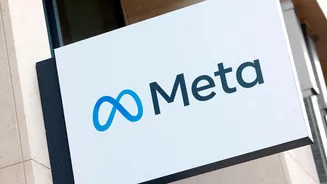The Reorganization Unveiled
The recent reorganization at Meta's AI labs marked a substantial change in its operational structure and strategic goals. It was revealed that 600 employees
were affected by the layoff, reflecting a significant adjustment within the workforce dedicated to artificial intelligence. This restructuring was not simply a cost-cutting measure, but a calculated pivot, signaling a change in direction towards developing more advanced AI models. The company's focus shifted towards next-generation technology, implying a broader, more ambitious roadmap for its AI initiatives. This internal realignment underscored a commitment to innovation, reshaping its approach in the competitive landscape of AI development.
Impact on Employees
The decision to lay off 600 employees undoubtedly had a significant impact on those affected and within the broader company culture. Employees faced job displacement as Meta streamlined its AI division, and this change caused a ripple effect of uncertainty and adaptation. It is also important to consider the emotional and professional challenges those employees experienced, including the search for new opportunities. This also necessitated the development of new strategies to support these individuals in their transition. The company likely made efforts to mitigate the challenges, such as providing severance packages or career counseling to aid in the job search process, though the full details would need further insight.
Focus on Future Models
Meta's strategic redirection of its AI efforts centered on the development of next-generation models. This implied that it was prioritizing innovation in the core of its AI capabilities. This change indicated a shift away from earlier models and applications in favor of exploring more advanced AI paradigms. This strategic shift involved a commitment to investing in research and development, as well as the need for building new infrastructure. Meta would have also had to recruit and retain specialized talent to drive the development of its AI models. It showcased a forward-looking approach as Meta repositioned itself in the rapidly evolving landscape of AI.
Strategic Implications Explored
This reorganization had far-reaching strategic implications for Meta, indicating its adaptability and long-term vision in the tech world. The focus on developing new AI models positioned the company to enhance user experiences and create new business opportunities. By concentrating resources on next-generation technology, Meta signaled its intention to remain at the forefront of the AI race. The decision to restructure also reflects the dynamic nature of the technology industry, in which businesses must adjust their strategies to remain competitive. This move highlighted the company's commitment to innovation and its eagerness to seize the opportunities offered by advanced AI technologies, shaping its trajectory in the coming years.
Competitive Landscape Shift
The restructuring at Meta also needs to be viewed within the context of an increasingly competitive AI landscape. With other major tech companies aggressively investing in AI, Meta’s strategic realignment was essential to maintain a competitive advantage. By focusing on advanced models, it planned to differentiate itself by offering superior AI capabilities. This involved a competition for talent, resources, and innovation to make sure they remained on top. This competitive environment fuels a rapid pace of development, and the company needed to keep up with developments across the industry. Meta's adaptation emphasized its intention to not only compete but also to lead in the rapidly evolving AI domain.















